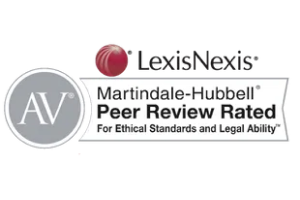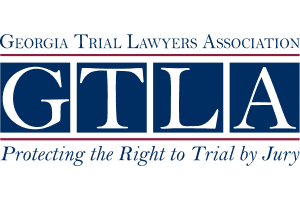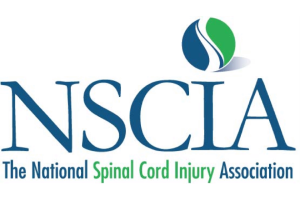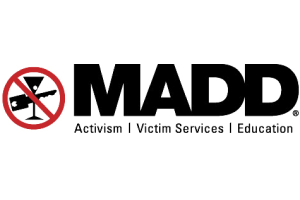Product Liability
Atlanta Lawyers Handling Claims and Lawsuits
Involving Dangerous or Defective Products
Attorneys at Ragland Law Firm, LLC have considerable expertise in the field of product liability law and litigation. They have handled many personal injury and wrongful death lawsuits in Georgia against companies which manufactured and/or sold a defective or unsafe product. The product liability cases pursued by Ragland Law Firm, LLC have involved many types of defective or hazardous conditions on a variety of different products including tools, machinery, toys, industrial equipment, flammable clothing, contaminated hamburger, recreational vehicles, tires, automobiles, medical devices and prescription drugs. Product liability litigation is a primary focus area for the lawyers at Ragland Law Firm, LLC and they are willing to pursue product defect cases in Georgia, Alabama, Florida, Tennessee and South Carolina.
Defective or Unsafe Products Are a Significant Cause
of Severe Injuries and Wrongful Deaths
In part because of product liability lawsuits, many manufacturers have made improvements in the safety of their products. In the last 2-3 decades, many unreasonably dangerous products have either been removed from the market, or their designs or warnings have been greatly improved. However, even today, many defective and unsafe products still reach the marketplace and result in a staggering number of injuries and deaths. According to the U.S. Consumer Product Safety Commission (CPSC), defective products cause nearly 30 million injuries and over 22,000 fatalities each year. On average, the CPSC requires the recall of approximately 400 products from the American marketplace every year. These recalls help lower the risk of injury or deaths to consumers, but they do not come close to eliminating the problem of dangerous and deadly products. With the rising influx of imported products from China and other foreign countries, the risk of being injured or killed by a defective product will likely remain a concern for many years to come.
The Need for an Experienced Georgia Product Liability Attorney
For many reasons, cases involving claims of product liability tend to be more costly and difficult than other types of personal injury cases. To begin, the defendant is often a large corporate manufacturer which has vast resources to fight and protract the litigation. In addition, product liability cases usually present complicated engineering or scientific issues concerning the product’s design, its potential hazards, and/or the cause of its malfunction or failure. This requires considerable research, study and analysis by the attorneys handling the case. Moreover, testimony from an engineer or other qualified expert in the field at issue is almost always required to support the allegations asserted by the plaintiff in a product liability case. In order to develop the opinions he or she will offer at trial, experts in product liability cases often need to conduct studies, experiments or accident reconstructions. Experts and the work they perform can be quite expensive. Finally, product liability is a very complex area of law. There are claims and legal issues which are unique to cases involving allegations that an unsafe or defective product caused someone’s injury or death.
For these reasons, product liability lawsuits are best handled by Georgia attorneys who are experienced with these types of cases, and concentrate a considerable part of their practice on product liability law. Anyone who has been injured or had a family member killed by a dangerous product should seek out representation from an experienced Georgia product liability lawyer. Ragland Law Firm, LLC has the resources and expertise needed to pursue cases against even the largest of companies which have produced an unsafe or defective toy, vehicle, tire, machine, tool, drug, medical device or other product.
Overview of Product Liability Law
“Product liability” generally refers to a legal claim or lawsuit in which someone alleges that a product malfunctioned, failed to work properly, or was too dangerous and as a result, caused one or more persons to suffer bodily injury or death. In a product liability lawsuit, the plaintiff seeks to hold the designer, manufacturer, distributor and/or seller of the defective product legally liable for damages arising from the injuries or death caused by that unsafe product. As a general rule, laws governing product liability cover personal property not land, real estate or improvements to real property. Examples of “personal property” governed by product liability laws include all types of consumer goods such as tools, appliances, toys, furniture, firearms, sporting gear, and motor vehicles. Product liability claims can also involve all types of industrial, construction or farming machinery or equipment. In addition, raw or prepared food items, beverages, prescription drugs, over-the-counter medicine, and medical devices can also be the subject of product liability lawsuits. Almost anything which is manufactured or produced and then placed in the stream of commerce for purchase or consumption by the public can be the subject of product liability litigation.
Each state has their own laws governing product liability. There is no uniform federal product liability law. Therefore, product liability laws are not entirely the same in each state. Some states, like Georgia, have enacted statutes which govern product liability lawsuits. In other states, product liability laws are entirely derived from appellate court decisions.
Thousands of Different Consumer Goods and Industrial Equipment
Have Been the Subject of Product Liability Litigation
Since the 1960’s when the law of product liability began to be developed in this country, thousands of different industrial machinery and/or consumer products have been the subject of product liability litigation. A claim of product liability can be made in any instance where someone is hurt or killed by any type of defective consumer or industrial good after it was manufactured or produced, placed in the stream of commerce, and then purchased and used by an individual, business or governmental entity. Thus, product liability lawsuits have involved many different types of products including, but not limited to, the following:
- toys, baby cribs, mattresses, baby strollers, infant bassinets, play pens, changing tables, child car seats, swings, playground equipment and other items used for or by children;
- motorized recreational vehicles such as 4-wheelers, ATV’s, motor scooters, mopeds, mini-bikes, and golf carts;
- jet skis, motor boats, marine trailers, rafts, ski equipment, scuba gear, life jackets, life preservers and other goods used for water recreation;
- treadmills, exercise bikes, stair machines, weight apparatus and other exercise equipment;
- trampolines, bungy cords, paint ball guns, bicycles, tricycles, skateboards, rollerblades, skates, scooters, helmets and other similar recreational items;
- tents, sleeping bags, propane heaters and grills, deer stands, portable generators and other gear used for hunting, fishing or camping;
- rifles, pistols, hand guns, trigger locks, pellet guns, and other firearms;
- motor vehicles (including cars, trucks, vans, SUV’s and motorcycles) and automotive parts or accessories such as tires, brakes, cruise control systems, batteries, seatbelts, airbags, trailer hitches, cargo racks, jack stands, and child car seats;
- industrial equipment such as forklifts, hoists, air compressors, punch presses, boilers, turbines, conveyor systems, and manufacturing machinery;
- construction equipment such as bobcats, tractors, bulldozers, cranes, jackhammers, welding tools, scaffolding, ladders, hard hats, and power lifts;
- elevators, escalators, moving sidewalks and similar passenger moving equipment;
- baby pools, above ground pools, permanently constructed pools, whirlpools, hot tubs, spas, diving boards, pool slides, pool covers, pool fencing and gates, etc.;
- lawnmowers, chainsaws, mulchers, blowers, tillers and other lawn equipment;
- saws, drills, nail drivers and other power tools;
- smoke detectors, fire extinguishers, burglary alarms, gas monitors, carbon monoxide detectors, and other safety equipment;
- household appliances such as water heaters, dishwashers, stoves, furnaces, gas fireplaces, space heaters, irons, deep fryers, microwaves, outdoor grills, and garage door openers;
- hair dryers, disposable lighters, electric blankets, batteries and other consumer goods;
- toxic or potentially poisonous substances such as pesticides, herbicides, insect repellants, solvents, household cleaners, insulation, lead paint and other chemicals;
- firecrackers, bottle rockets, sparklers, aerial bombs, quarter sticks, and other fireworks;
- highly flammable clothing such as kid pajamas and Halloween costumes;
- food or drink products including tainted or contaminated raw meats or vegetables, undercooked beef or chicken, and negligently stored or prepared food;
- medical devices such as implants, ECG monitors, coronary stents, pacemakers, defibrillators, surgical mesh, heart valve replacements, orthopaedic bone screws, and joint replacement components;
- contaminated or unsafe blood, blood by-products, or tissue given to a patient during surgery or other medical procedures; and
- pharmaceutical products such as prescription drugs, over-the-counter medicine, diet pills, contact lenses and contact lens solution.
All of these products can be and actually have been the subject of product liability litigation in Georgia or other states. Many of these products have been the subject of recalls required by various federal agencies such as the Consumer Product Safety Commission (CPSC), the Food & Drug Administration (FDA), or the National Highway Traffic Safety Administration (NHTSA). If you have been injured or a family member has been killed by any of the products listed above, or by any other defective product, you should consider contacting the Georgia product liability lawyers at Ragland Law Firm, LLC.
Product Liability Lawsuits Are Justified
and Benefit Society by Promoting Safe Products
Prior to the emergence and development of product liability laws beginning in the late 1960’s, the rule of coveat emptor prevailed in this country. Coveat emptor means “ let the buyer beware.” Under this rule, the buyer assumed most of the risk associated with the function and potential hazards of any product he purchased. It was difficult to hold the manufacturer or seller legally liability for injuries caused by use of their product.
Fortunately, the doctrine of product liability has continually progressed away from the old rule of “buyer beware” during the past three decades. Today, the modern view is that a designer, manufacturer and/or seller of a defective product should be held liable for any injury or death which occurs while that unsafe product is being used in a manner intended or reasonably foreseeable to its producer. In this country, current product liability doctrine is based upon a recognition that as compared to manufacturers, most consumers do not have the same opportunity to analyze or inspect products available for sale, nor the same ability to recognize potential hazards, nor the same ability to internalize and spread the costs associated with injuries caused by such dangers. Moreover, there are many sound public policy reasons for allowing consumers to pursue product liability lawsuits. Perhaps most importantly, product liability lawsuits and the threat of such litigation give manufacturers a significant incentive to produce safer products and to recall or redesign products proven to be too dangerous. Because they are in the best position to assess and improve the safety of their products, society greatly benefits from the existence of this financial incentive to make safe products. There is little doubt that products are safer today because of our product liability laws. Additionally, it is fair that the manufacturer, rather than the injured consumer, bear the primary burden of paying the costs associated with injuries caused by a defective product. The manufacturer is better able to absorb such costs and spread them to all consumers. Plus, the manufacturer should not be allowed to profit from the sale of products without the risk of having to pay for a consumer’s injuries or death in the event its products prove to be defective.
Proof Required by Georgia Law in any Product Liability Case
The hallmark of any product liability case is proof that the product at issue was “defective” and that such defective condition(s) proximately caused the injuries or fatality suffered by the plaintiff or his family member. In addition, the plaintiff must show that the product reached the purchaser and end user in substantially the same condition as it was when it left the manufacturer’s facility. Finally, the plaintiff must establish that the product was being used in a manner which was intended or reasonably foreseeable to the manufacturer.
Thus, there are four essential elements to a product liability case:
- The product was “defective” at the time of the injury causing event;
- The defective condition proximately caused the injury or death at issue;
- At the time of the injury causing event, the product was still in substantially the same condition as it was when it left the defendant’s possession; and
- The product was being used as it was intended to be used or in a manner that was reasonably foreseeable to the defendant.
What Makes Something “Defective” for Purposes of a Product Liability Lawsuit?
The first and most critical element of a product liability case is establishing that the product was in a “defective” condition at the time it caused an injury or death. Under Georgia law and the law in most jurisdictions, a product is considered to be “defective” when it is “unreasonably dangerous for its intended purpose .” There are two important concepts in this widely accepted definition of “defective.”
First, for a product to be “defective,” it must be “unreasonably dangerous.” The emphasis should be on the word “unreasonably.” Many products inherently can be dangerous but the fact that they are dangerous alone does not make them “defective.” For example, a knife can cause lacerations and a lawn mower is capable of amputating the hand or foot of its user. That ability to cut and amputate makes these products, in general, potentially dangerous to users, but it does not necessarily make them unreasonably dangerous. Like many other products which are capable of causing injury, these products are generally not considered to be defective because it is well accepted that the utility and benefits of knives and lawn mowers outweigh the inherent dangers they pose. Therefore, the manufacturers of every knife or lawn mower are not always liable in every case where someone is hurt while using such a product. However, a particular knife might be considered “unreasonably dangerous” if, for instance, its handle was too weak causing it to break off during normal use thereby allowing the user to be cut or stabbed. Similarly, a particular brand of lawn mower could be considered “unreasonably” dangerous because it failed to incorporate technologically available and relatively inexpensive safeguards which reduced the risk that the user’s hand or foot could get near the blade and suffer an amputation.
Second, whether a product is “unreasonably dangerous” and therefore “defective” is viewed from the perspective of its intended or foreseeable use. Many safe products can become very dangerous when they are abused or put to a use not intended by the manufacturer. For example, most drugs are relatively safe if they are taken in the correct dosage, but they can become “unreasonably dangerous” when not used as directed. A drug may be dangerous when it is not taken properly or in the right amount, but that does not necessarily make the drug “defective” under the product liability law in most states, including Georgia. A drug or any product will only be considered defective if it is harmful or even deadly while being used as instructed and intended by the manufacturer.
Three Types of Defects Which Give Rise to a Product Liability Claim
Product liability claims can be divided into three categories. The law in Georgia and in most states recognizes that a product can be “defective” in three separate ways. The three types of product defects are:
- Manufacturing Defect – occurs during the production or assembly process;
- Design Defect – takes place during the pre-production design or testing phase;
- Warning or Instructional Defect – can take place before, during or after the product is produced and marketed.
A manufacturing defect occurs when some mistake or abnormality takes place during the manufacturing process thereby causing the product not to conform to its design specifications or to vary from the condition it was expected to be in at the conclusion of its production. A manufacturing defect usually involves a single unit or a batch of product made around the same time. In a manufacturing defect case, the plaintiff does not allege that the design of every like product produced by the defendant is inherently defective. Instead, the plaintiff alleges merely that there was something flawed or wrong with the particular product that caused his or her injury. A manufacturing defect can be caused by many things such as the undetected use of a broken component part, the mistaken use of substandard materials, human error on the assembly line, faulty production equipment, and/or the failure to adequately inspect or test the product during or at the end of the production cycle.
In contrast, a design defect involves a situation where the product is alleged to be unreasonably dangerous even though it was manufactured and assembled exactly as intended. In a design defect case, there are no unique flaws or imperfections in the particular product causing the injury. Instead, the plaintiff alleges that every like product is inherently unsafe because of the way it is designed. Many design defect cases involve allegations that materials chosen to be used were too weak for the anticipated use of the product, or that the product could have been made safer if it had incorporated certain safety devices. In almost every design defect case, the plaintiff will need to retain an engineer or other expert to testify about how and why the product’s design is or was inherently too dangerous.
A warning or instructional defect involves a failure to include adequate instructions describing the intended and correct use of the product, and/or a failure to provide adequate warnings about the known or foreseeable hazards associated with usage of the product. Not every product can be made to be perfectly safe and a non-defective product may still pose certain risks even when used as instructed. Therefore, there is an obligation by the manufacturer and/or any company which packages or labels the product to provide understandable and conspicuous warnings about the known and foreseeable dangers (especially those which are or may not be obvious) associated with normal use of the product. Any failure to give such needed warnings can form the basis of a product liability claim. Under Georgia law, the duty to warn is considered to be continuous, and exists both at the time the product is produced and after it is sold to the consumer. Therefore, a manufacturer would be required to attempt to warn users of its product about any potential dangers it becomes aware of even after the product has been sold.
Various Claims and Legal Theories Which Can Be
Pursued in a Georgia Product Liability Lawsuit
Under Georgia law, there are several different legal theories which can be asserted against the defendants in a product liability case. Lawyers refer to each legal theory as a “cause of action.” In Georgia, like most states, plaintiffs in product liability cases can assert claims based upon the following legal grounds:
- Negligence
- Strict Liability
- Breach of Warranty
- Misrepresentation or Fraud
In Georgia, a product liability case can be based on one or more of these “causes of action.” By assessing the unique facts of each case, a products liability attorney can determine which of these claims are applicable and meritorious. In almost every product liability case, the plaintiff will allege negligence and strict liability against the defendant(s).
Defining and Establishing “Strict Liability” in a Product Liability Case
The ability to utilize the legal doctrine of “strict liability” is a significant advantage to the plaintiff and sets product liability litigation apart from other personal injury and wrongful death cases. Under strict liability, a manufacturer can be held liable for deaths or injuries caused by its defective product regardless of whether it acted negligently. Strict liability can be established upon proof that the product was defective and unreasonably dangerous, and that such defect caused injury or death to a consumer or bystander. Thus, the concept of “fault” is absent, and the defendant’s legal liability to the plaintiff can be established even if the defendant acted with due care. Proof that the manufacturer or seller acted in a negligent manner is not required. In sum, under the doctrine of strict liability, the focus is not upon the actions and conduct of the defendant, but solely upon the condition of the defendant’s product itself.
Georgia’s Product Liability Statute
In 1968, the Georgia legislature passed a product liability statute which today is codified at O.C.G.A. § 51-1-11. In subsection (a) of that statute, the legislature expressly eliminated the requirement of “privity” and, in effect, declared that product liability claims could be brought by or on behalf of anyone hurt or killed by a defective product. Prior to 1968, the longstanding common law rule of “privity” limited civil claims against manufacturers or sellers of products to only those persons who had actually purchased the product. Persons other than the purchaser who were injured or killed by a dangerous product essentially had no right to seek compensation because they were said to lack “privity” with the defendant. The passage of Georgia’s Product Liability Statute eliminated the privity requirement and today, personal injury and wrongful death lawsuits can be brought in any instance where a defective product causes injury or death to anyone who used the product (whether he or she purchased it of not) and any bystander(s) who were near enough to be injured or killed.
Next, in subsection (b), the Georgia Product Liability Statute sets forth the criteria for holding a manufacturer liable for injuries or deaths caused by its defective product. O.C.G.A. § 51-1-11(b) states as follows:
(1) The manufacturer of any personal property sold as new property directly or through a dealer or any other person shall be liable in tort, irrespective or privity, to any natural person who may use, consume, or reasonably be affected by the property and who suffers injury to his person or property because the property when sold by the manufacturer was not merchantable and reasonably suited to the use intended, and its condition when sold is the proximate cause of the injury sustained.
(2) No action shall be commenced pursuant to this subsection with respect to an injury after ten years from the date of the first sale for use or consumption of the personal property cuasing or otherwise bringing about the injury.
(3) A manufacturer may not exclude or limit the operation of this subsection.
The Need to Secure and Preserve the Defective Product as Evidence
The specific product which allegedly causes an injury or death is often times a very critical piece of evidence in a product liability case. It can be used to prove that the defendant was indeed the company which produced the product involved in the injury causing event. Furthermore, the product itself may provide evidence relevant to a number of other issues such as how the accident occurred, whether the product had been altered or modified, and/or whether the product was being misused or put to its intended use at the time of the accident. Finally, the product itself is especially critical in a manufacturing defect case because it may be the only evidence of the flawed assembly, broken component part or other imperfection which was created during the production process. As a practical matter, it can be difficult for the plaintiff to prevail in a product liability lawsuit if the plaintiff does not have the product alleged to have caused the injury or death, especially where a manufacturing defect is alleged.
Therefore, it is very important that someone locate, secure, and then preserve the product (and all pieces or components of the product) as soon as possible. Also, photographs and/or videotapes should be taken of the accident scene. If the product (or any parts thereof) is still located at or near where it was at the time of the injury causing event, detailed photographs of the scene and product should be taken prior to moving or removal of the product. Once the product is secured, it should be photographed in detail to document the condition it was in as close to the time of the accident as possible. At some point, the product should be put in a secure area of storage where it can be preserved in the condition it was in immediately following the accident. The product should be moved, handled and stored in a manner which will preserve it as evidence for a possible future product liability lawsuit. No repairs should be made, and nothing should be done to the product which would alter or change its condition until it can be examined by a products liability attorney and/or an expert retained to examine and analyze this evidence.
Federal Regulations and the Role of the
Consumer Product Safety Commission (CPSC)
In 1972, Congress passed the Consumer Product Safety Act which, among other things, created the Consumer Product Safety Commission (CPSC). The CPSC is an independent federal regulatory agency whose legislative purpose is to “protect the public against unreasonable risks of injuries and deaths associated with consumer products.” The CPSC is authorized to develop voluntary and mandatory industry standards, to ban products under certain circumstances, to pursue recalls of products that present substantial hazards to consumers, to conduct research, and to provide general public education about product safety issues. Anyone can obtain product safety information or report an accident or injury caused by an unsafe product by calling the CPSC toll free Hotline at (800) 638-2772.
Product Liability Claims Involving Food or Beverages
There are over 40 different food borne pathogens (including fungi, viruses, parasites and bacteria) that can cause human illnesses. According to the CDC, these pathogens cause more than 70 million cases of food poisoning in the U.S. each year. Some of these lead to serious food borne illnesses. Every year, more than 5,000 people die and more than 300,000 people are hospitalized because of illnesses they contracted from food borne pathogens.
Product liability laws apply not only to tangible goods and equipment, but also to perishable items such as raw meats and vegetables, canned or processed food items, bottled drinks, and cooked or prepared food served at a store or restaurant. Food poisoning victims may be able to assert strict liability claims against the party(ies) responsible for producing, preparing and/or selling a contaminated or negligently prepared food or drink product that results in food poisoning or a food borne illness. Click here and go to our Food Poisoning Practicing Center to learn more about your legal rights and remedies in this area.
Automotive Product Liability
Every year, tens of thousands of people are seriously hurt or killed in motor vehicle accidents. Therefore, it is not surprising that automobiles, trucks, vans and SUVs are often the subject of product liability lawsuits. These cases arise because an auto defect (such as a brake failure or malfunctioning accelerator) caused the crash to occur, or because the vehicle was “uncrashworthy” thereby causing or allowing an occupant to be severely injured during the crash sequence. Automotive product liability is an especially complex area. Click here if you want to learn more about Auto Defects/Automotive Product Liability.
Georgia Attorneys Who Have Actually Handled
Many Product Liability Lawsuits Against Large Companies
Most construction equipment, industrial machinery and consumer goods are manufactured by large companies. Thus, many product liability lawsuits involve litigation against large corporate entities. These companies and their liability insurers have vast resources to fight product liability lawsuits, so attorneys representing plaintiffs must be prepared and able to battle the considerable forces of big business. Ragland Law Firm, LLC has the resources and determination necessary to pursue product liability litigation, even if that means filing a lawsuit against a powerful conglomerate. The attorneys at Ragland Law Firm, LLC have a proven track record of handling product liability cases. You can learn more about some of the product liability lawsuits which Ragland Law Firm, LLC has successfully pursued against large corporations by visiting our Case Results page.
Contact a Qualified Atlanta Product Liability Lawyer
We are Georgia trial lawyers whose practice includes a concentration on product liability litigation. Please contact us if you or a family member has been the victim of a dangerous drug, unsafe toy, malfunctioning equipment, defective machine, tire failure, uncrashworthy vehicle or other hazardous product. We have considerable experience pursuing product liability claims against manufacturers and retailers throughout Georgia and the Southeast. We are willing to evaluate your case and assess whether there are meritorious product liability claims to pursue. If you have any questions, some of them may be answered on our Frequently Asked Questions page . However, you can call us if you have other questions you would like us to address.










